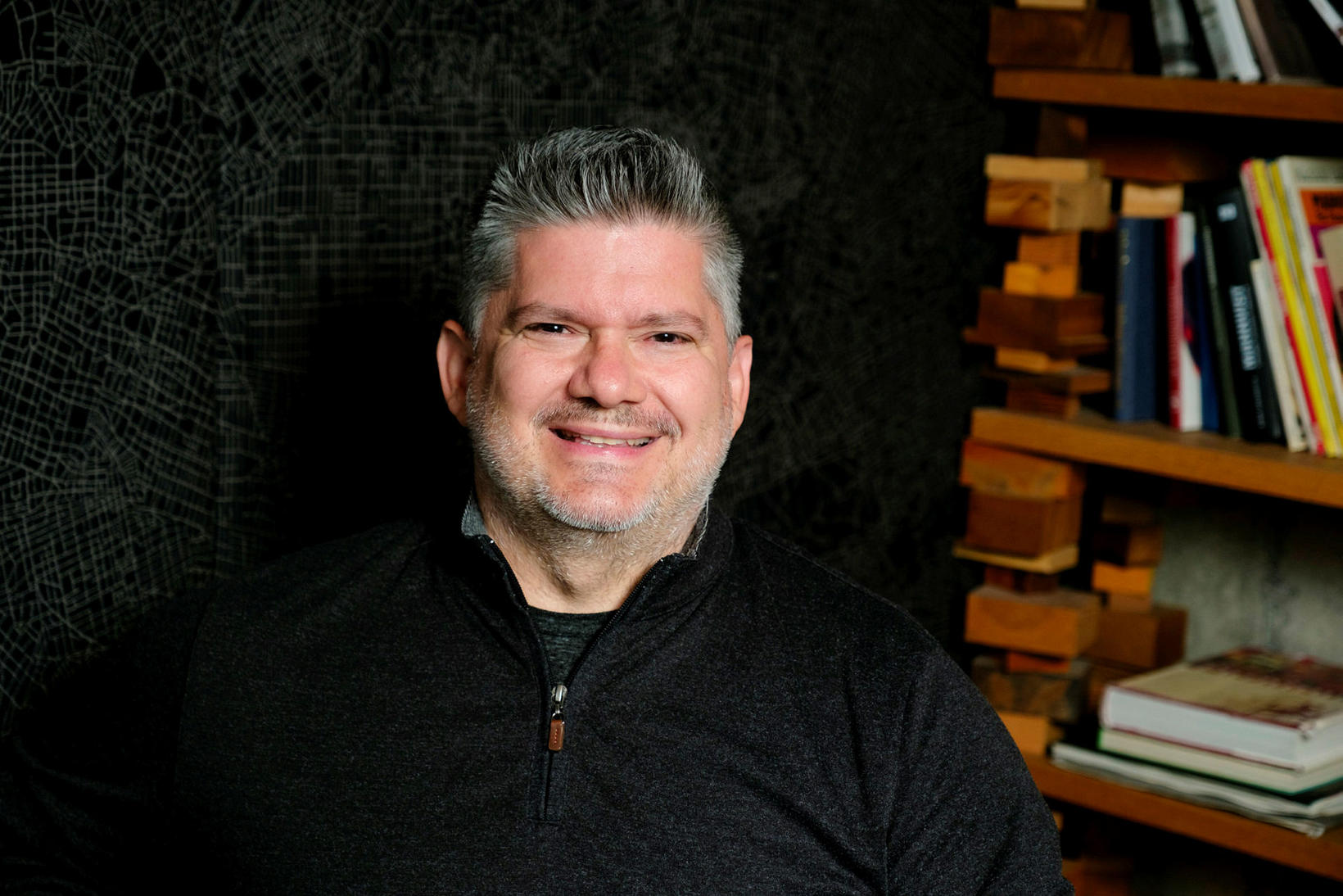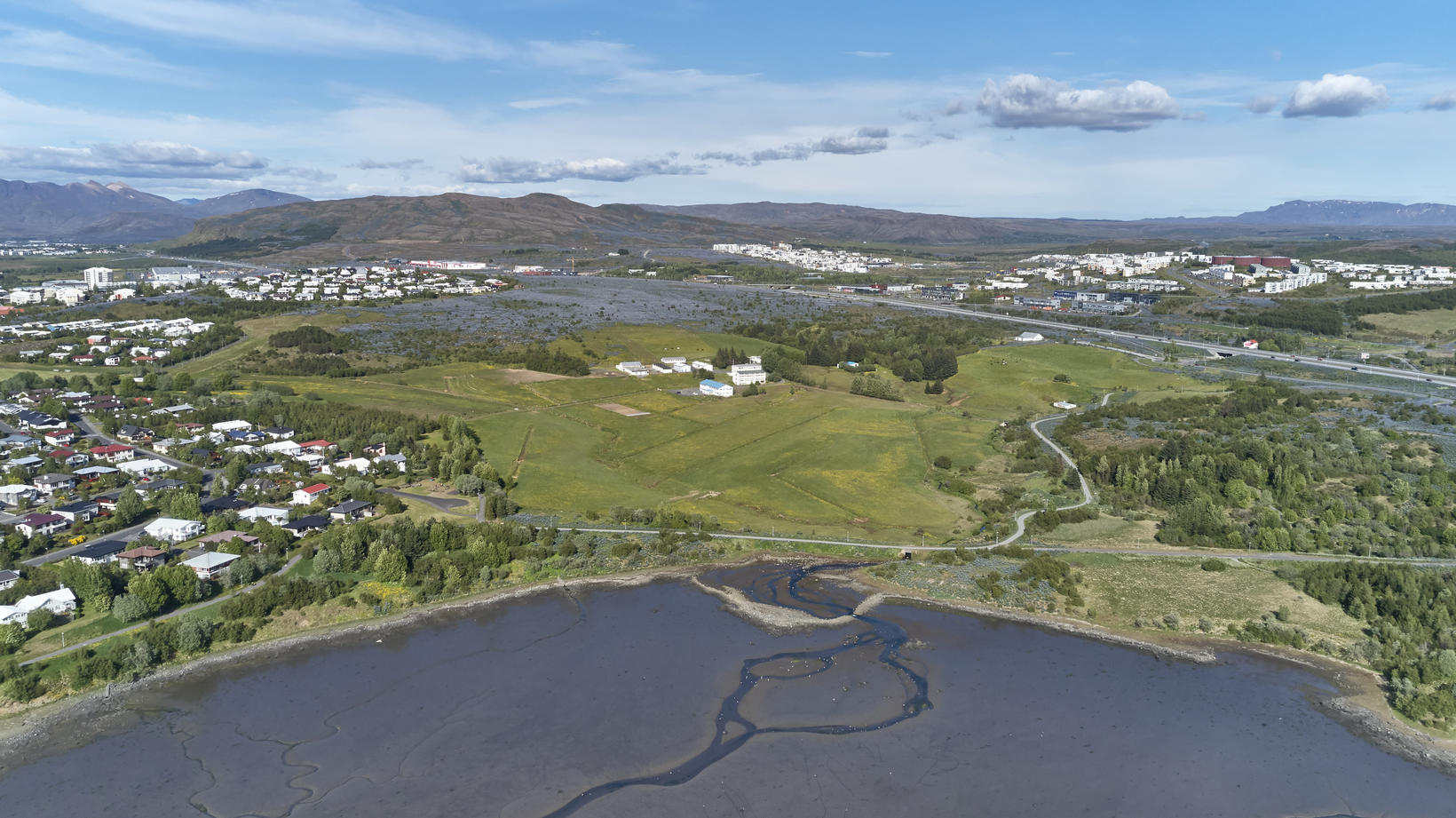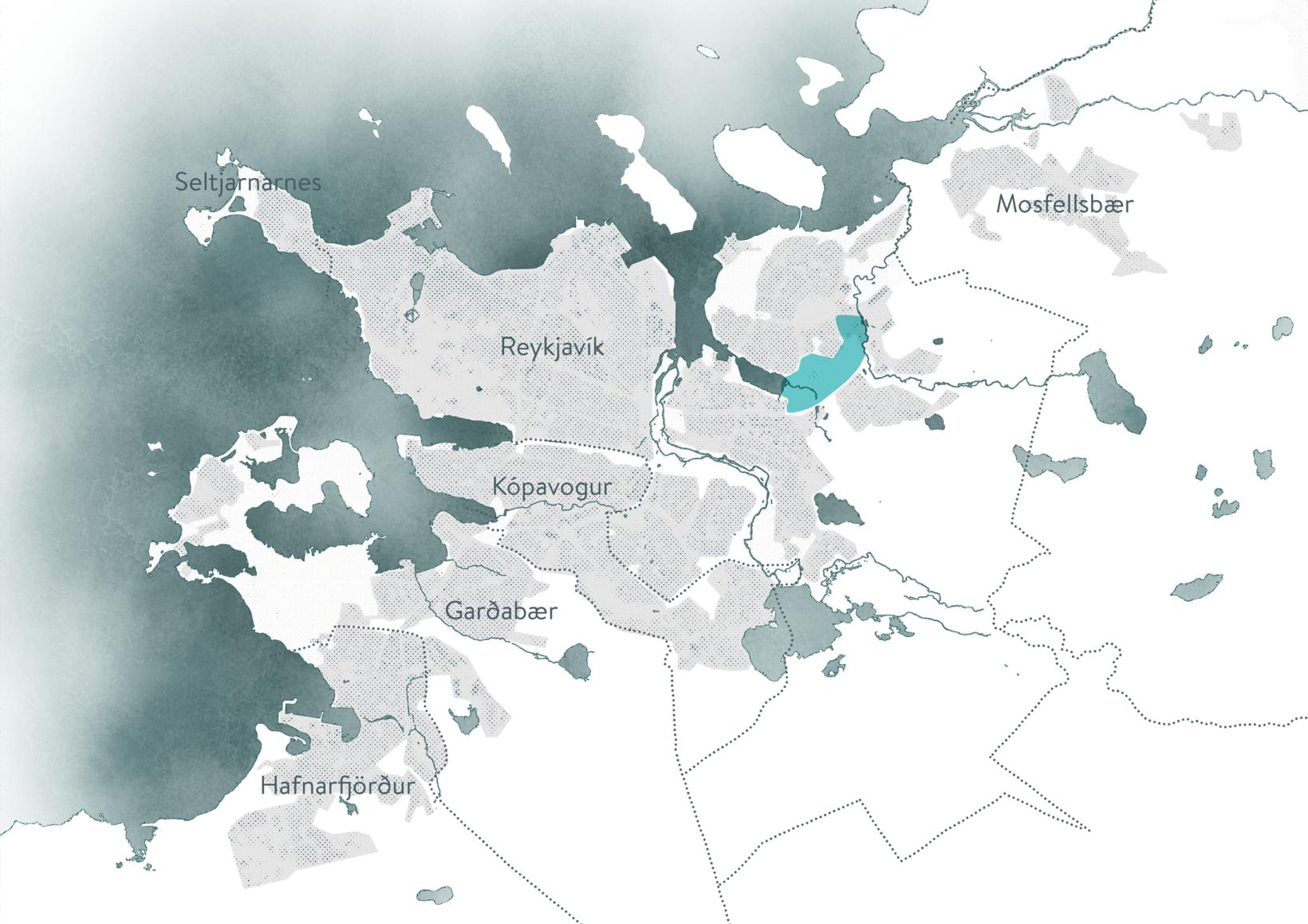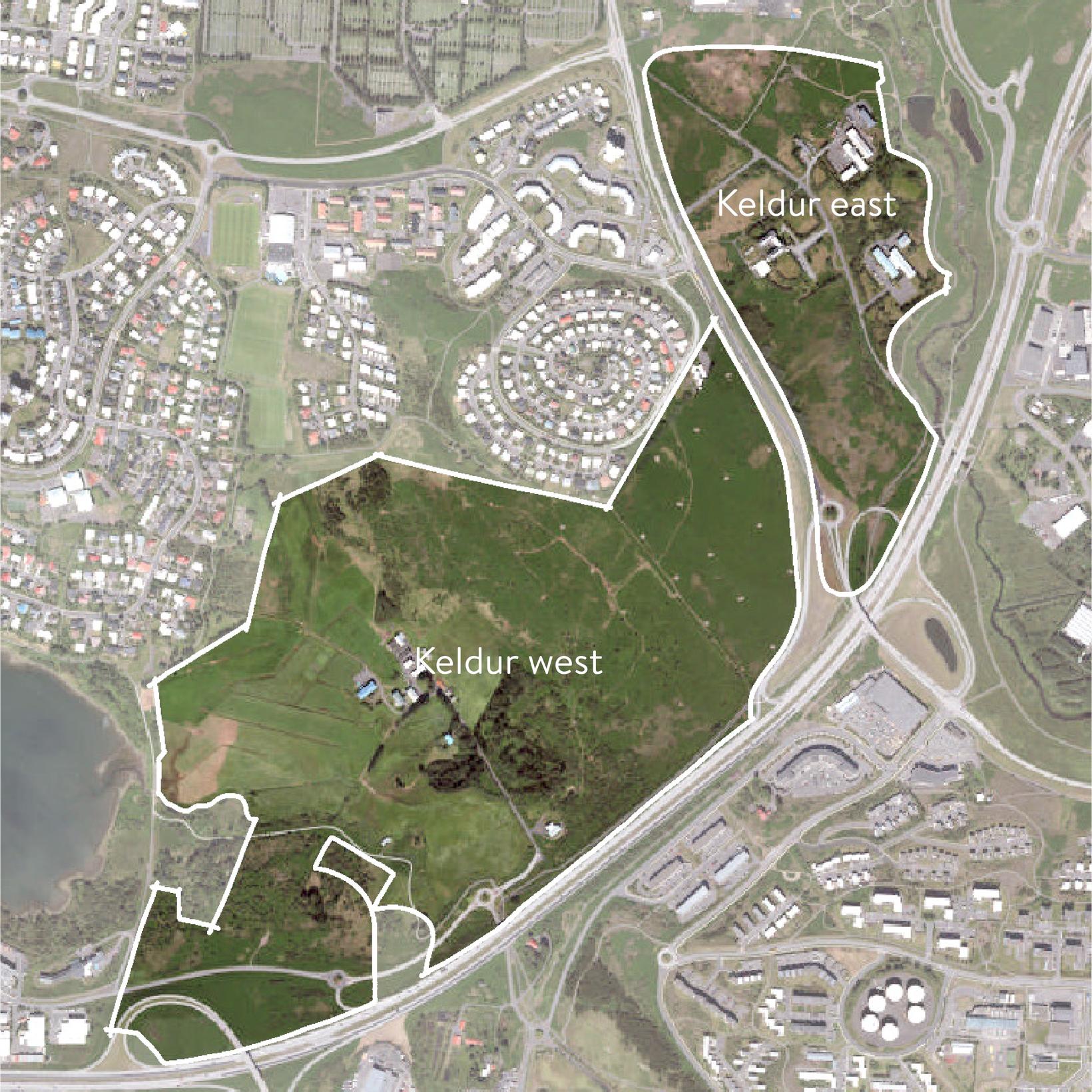The problem is too many cars
Brent Toderian, the former planning manager of the Canadian city of Vancouver, says that population needs to be dense, and residents need to be able to access services within their neighbourhoods. mbl.is/Kristinn Magnússon
It is fundamental to urban planning, both when designing and redesigning the neighborhood, that residents can access services and commerce within the neighborhood. Such planning can help to create more sustainable neighborhoods, reduce traffic, improve quality of life, and reduce the problems facing many urban areas in modern times. This is what Brent Toderian, former planning manager of the Canadian city of Vancouver, and one of the members of Keldurland Development Committee, said. At least ten thousand residents are supposed to live in the area with another five thousand working in the area. However, Toderian says that this number should be the bare minimum and would like to see a much denser settlement.
Toderian says that much has to change in Reykjavík and the capital area and that the prevailing need of using the private car needs to be reduced. He also says that the notion of self-driving cars helping solve traffic problems in cities is a myth. If anything, they will make the situation even worse. A journalist sat down with Toderian and discussed the city’s planning issues, the construction of Keldur area, and the status of the private car in cities.
Need for change
Toderian worked as a Vancouver-based planning manager around the preparations for the 2010 Olympics in that city. He has also been the head of the downtown and suburban development in Calgary, another Canadian city. In addition, he has worked as a planning consultant for cities around the world, from Oslo and Helsinki to Buenos Aires, Perth and New York.
He describes himself as a supporter of major change when it comes to city planning, especially in North America, where he comes from. He says that the planning of many cities today does not work in terms of the immediate problems that cities face. In that context, he cites the effects of climate change on people’s lives, from the problems of building cheaper housing and reducing pollution. “I don’t usually get calls from cities unless there is a willingness to do better and actually do much better.”
In Toderian’s view, one of the main issues to keep in mind about a number of cities, including Reykjavík and the bigger capital area, is that these cities were built largely with automobiles in mind. “It is your Achilles’ heel that the car has dominated the planning. It is certainly the situation in the suburbs, but also downtown. It struck me how dominant cars are in even the densest areas of downtown,” he says.
"The biggest challenge of our time in urban planning"
Toderian says it is easy to look at today’s traffic problems and say that there is a lack of more parking spaces and a more powerful street system. “But the core problem is that you have too many cars.” He states that he is not the main antagonist of private cars, and that in his view, cars will always be part of cities for the unforeseen future. “But I am totally against building car-dependent cities where the only means of transport is the private car.” At the same time, he reiterates that this is the situation in the capital area, where the only realistic solution in many people’s minds to reaching the suburbs is to travel by car.
But most important, it is not just cars or public transportation, Toderian says. He says that planning issues in cities where good economic conditions should prevail improve land use and thus reduce the need for cars and public transportation. That people can walk or cycle within the neighborhood to get all the major services. Whether it’s schools, grocery stores, getting haircuts or going to work yourself. Most of these things combined, the need for car trips decreases dramatically, thus reducing traffic and pollution. All other organizational arrangements also greatly simplify the cost of local governments. "The magic of density is so important," he says.
“This is the biggest challenge of our time in urban planning. We have built too many suburbs that are inefficient and poorly planned and need to be changed. Even if we start building better neighborhoods today, the existing ones need to be changed,” he says, specifically referring to the fact that land use across the city is bad, including the greater Reykjavík area.
The City Line is not a magic solution
In relation to the construction of the land of Keldur, there is a lot of emphasis on the impact of the city line and how the transportation system will play into the planning of the area. Toderian, however, says the city line is not the main issue in his mind. “The city line is a very important project, but it will not be a magic solution on its own for Reykjavík.” He stresses again, that it is the basic structure within the neighborhood that is most important to reduce the need to move between neighborhoods many times a day.
To remove all doubt, Toderian reiterates that the city line is, in his opinion, a very ambitious project, which is a good investment. When investing in a similar system, it is very important to get the most out of it through planning and he believes that Reykjavík is heading in that direction.
Wants to see a much denser population
The data for the development competition for Keldur area shows that it is a 116-hectares area and is seen as housing a population of ten thousand or more and that it has a working population of at least five thousand. For comparison, the population density of the town of Grafarholt is similar. According to Toderian, it is of the utmost importance in this context that the words “minimum” have been used.
He says he hopes that the City of Reykjavík will look to organize a much more crowded neighbourhood, revealing that contestants who have made it to the second round of the competition were asked to submit plans to see how the population could be increased somewhat in the area beyond the aforementioned minimum. Says he does not want to put forward a single figure for what he considers a reasonable number of people in the area, which is definitely more than 10 thousand. In fact, he says that he encourages the city to have a closer look at the effects of a significant increase in the population there compared to the minimum.
The conversation next shifts to the size of houses and how he envisions increasing densification. Toderian says the capital area has a significant amount of fairly dense urban areas, areas that have a large population of blocks of apartments that are on 3-5 stories. However, on closer inspection a lot of land is used for parking lots, traffic structures, and other structures that are a poor use of the land. He says that he cannot tell you what he sees as the perfect number of floors in a house, but in general, he looks at four or more floors.
High-rises in Iceland not well made
Toderian also notes that taller buildings do not seem to have a good reputation in Iceland, and he says that he understands that very well. “High-rises in Iceland are not well constructed at all,” he says, adding: “If they were the only high-rises I thought could be obtained, I would also not like high-rises in general.” In this connection, he refers both to the fact that the taller houses built fit poorly into their surroundings and that there is a great deal of waste of land around them. He states that this criticism also applies to smaller blocks, many of which are surrounded by much poorly used territory and a large number of parking lots, making them inefficient units in neighborhoods.
The myth about self-driving cars
The chatter eventually spreads to self-driving cars and whether they will have a major impact on future planning issues. Toderian is quite decisive about this, saying this is not the case. In fact, self-driving cars will make matters worse. “It’s a long-lived myth that self-driving cars are a magic solution.” He explains that they can, to some extent, alleviate parking problems by driving away themselves when the owner shows up for work in downtown, for example. Such an arrangement, however, promotes a much higher traffic density, as cars drive out of downtown to find parking and back into downtown when the owner intends to return home. It will therefore include four trips instead of two, and then there will be a count of if self-driving cars are allowed to circle while waiting.
“The only thing that can help in this respect are self-driving cars,” he says. However, “sharing cars” are already in use and are actually quite popular in many places. He still does not think that the number of sharing cars will ever be close to the number of private cars. Toderian also makes it clear that the auto industry will try to push back against the sharing cars idea as their goal is to sell more cars and ideally each person should have its own private car. He says that the only way for this solution would be if the government put in place an invitation that self-driving cars had to be shared cars.
“Technology will not save Reykjavík”
“So technology will not save Reykjavík,” he says, but admits that better technology can help to some extent, but that it will not save anything unless the basic idea of city planning is changed. “Better cars are not the solution, a better planned city is the solution. Fewer cars, less driving, more options and thus a better city.” This is what Toderian says is the basic theme of his stand on city planning and what 21st-century cities need to look at in their planning.







/frimg/1/57/94/1579405.jpg)